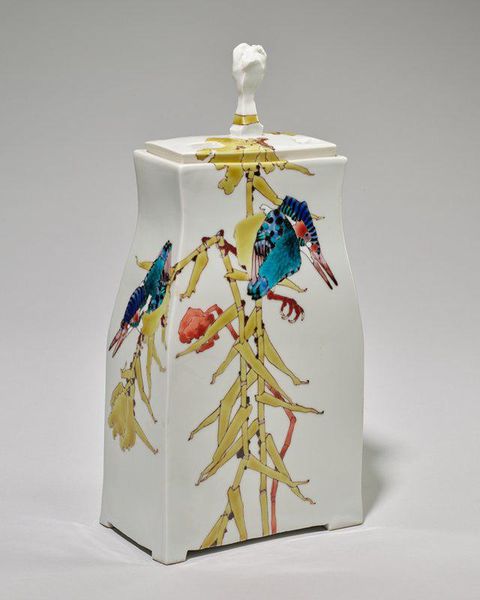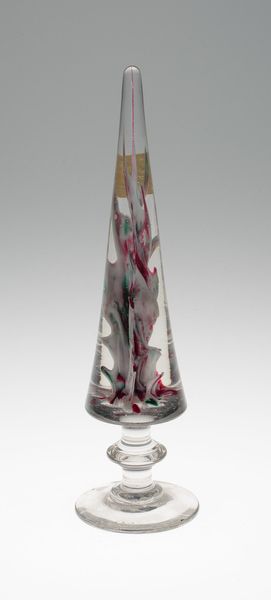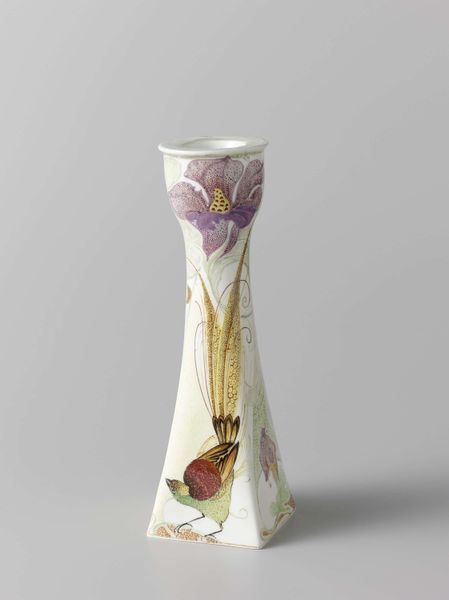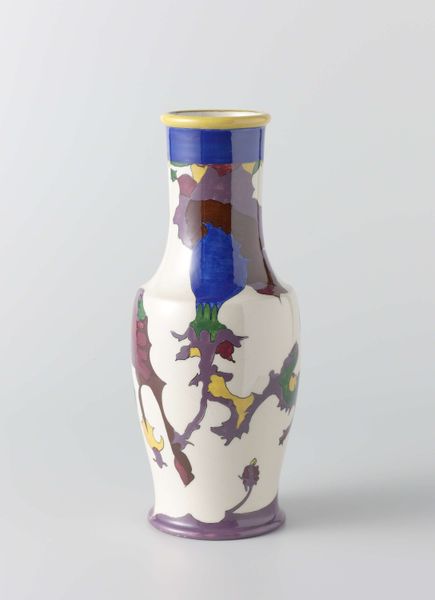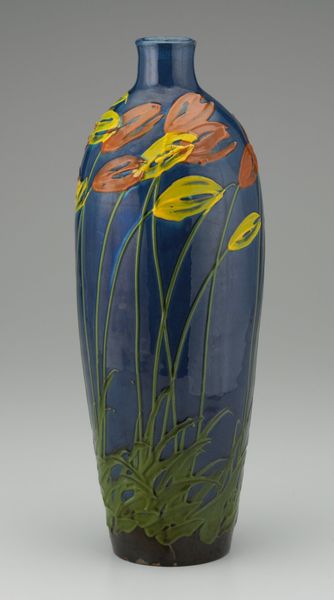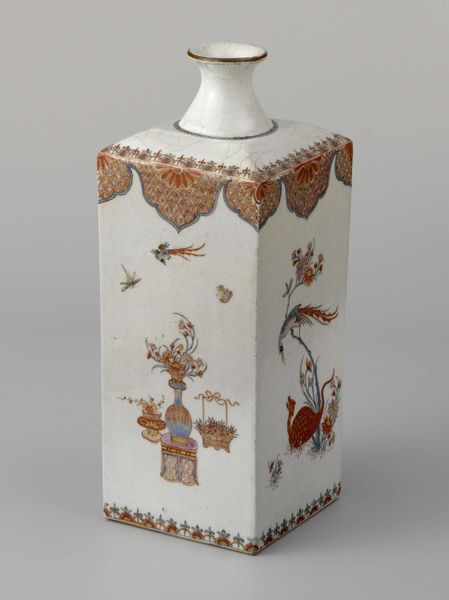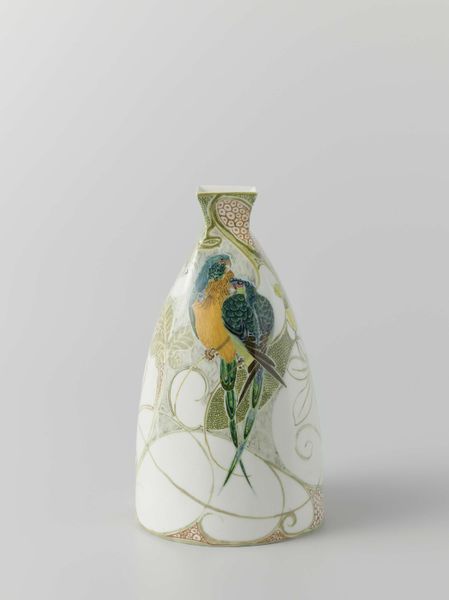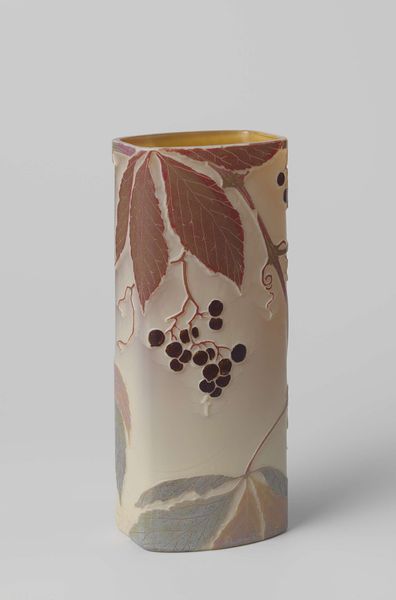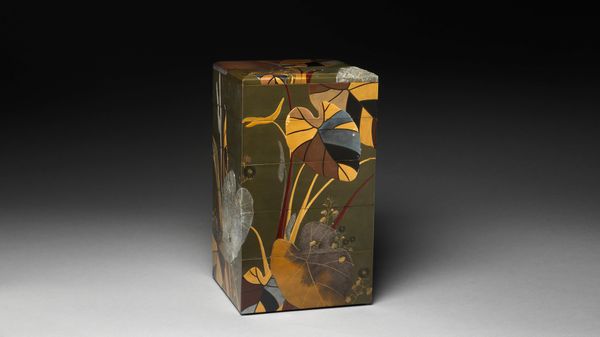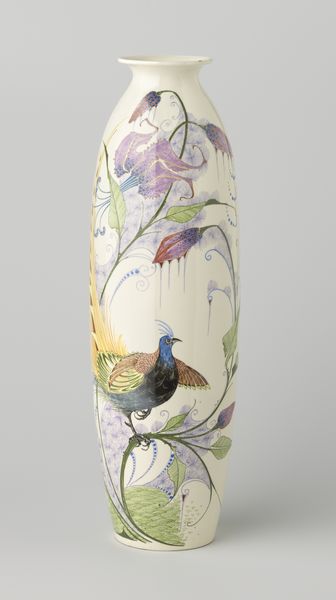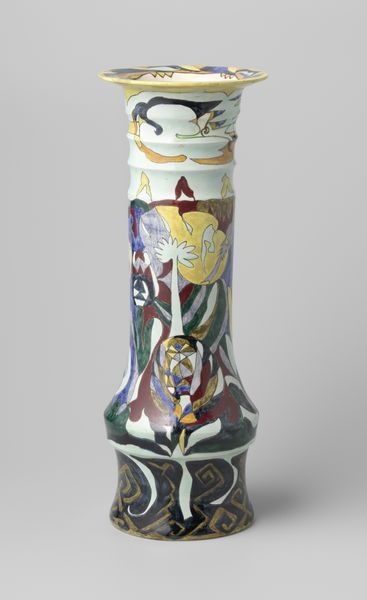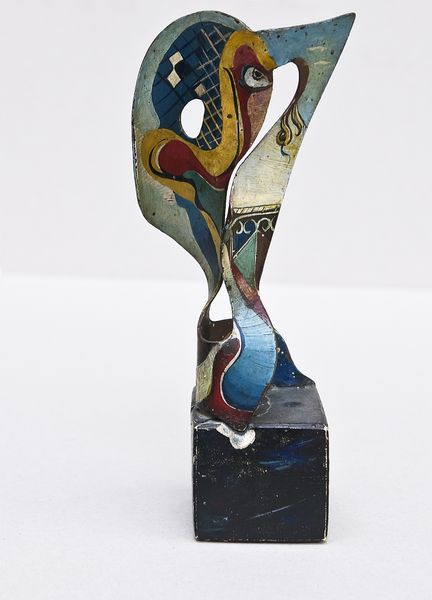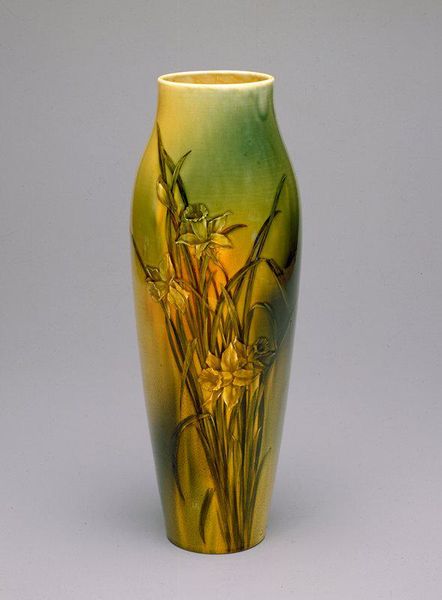![Untitled [Vase decorated with kingfishers] by Takegoshi Jun](/_next/image?url=https%3A%2F%2Fd2w8kbdekdi1gv.cloudfront.net%2FeyJidWNrZXQiOiAiYXJ0ZXJhLWltYWdlcy1idWNrZXQiLCAia2V5IjogImFydHdvcmtzLzJhNmYyZWU4LTZjNzUtNGRmNC1iOTYxLWVjNTI5YWFkNTNmZi8yYTZmMmVlOC02Yzc1LTRkZjQtYjk2MS1lYzUyOWFhZDUzZmZfZnVsbC5qcGciLCAiZWRpdHMiOiB7InJlc2l6ZSI6IHsid2lkdGgiOiAxOTIwLCAiaGVpZ2h0IjogMTkyMCwgImZpdCI6ICJpbnNpZGUifX19&w=1200&q=75)
ceramic
#
ceramic
#
orientalism
Dimensions: 19 3/8 x 5 7/16 x 4 1/2 in. (49.21 x 13.81 x 11.43 cm)
Copyright: No Known Copyright
Editor: So, this is an untitled ceramic vase by Takegoshi Jun, created in 2005. What immediately struck me were the kingfishers. They almost seem superimposed onto the delicate bamboo stalks. What’s your interpretation of this piece? Curator: This vase, with its kingfishers, evokes the complex relationship between tradition and modernity in Japanese art. I see in the vase an engagement with 'Orientalism' – how the West has perceived and exoticized the East. How does the vase affirm, challenge, or perhaps play with our ideas of cultural exchange and artistic identity? Editor: I hadn’t considered that. The kingfishers are quite vibrant and pop against the neutral background, but I’m not sure how that ties into those larger cultural narratives. Curator: Think about the symbolism embedded in these choices. Kingfishers themselves carry symbolic weight in many cultures – often linked to prosperity and good fortune. Consider also, the flattened perspective which also might reference earlier traditions. But it’s been filtered through a contemporary lens, almost like a Pop Art reimagining of a classic motif. Editor: So, it's not simply a beautiful vase, but also a commentary on how cultural symbols are reinterpreted and perhaps commodified in art? Curator: Precisely! Takegoshi invites us to question the role of the artist as a cultural interpreter and how these interpretations can reinforce or subvert existing power structures. What does it mean for an artist in the 21st century to revisit these traditional motifs? Editor: I see the kingfishers differently now, understanding the deeper implications of their presence. I definitely have to revisit how symbols are being deployed in artwork now! Curator: Agreed! Let us not forget to engage with art from diverse contexts and historical periods. This helps foster more inclusive narratives in art history.
Comments
minneapolisinstituteofart almost 2 years ago
⋮
Takegoshi Jun is the eldest son of the famous Kutani ware ceramist Takegoshi Taizan III (1919-84). He became an independent artist in 1972 after graduating from Kanazawa College of Art. Like his father, he continues to use the saturated palatte of colors associated with traditional Kutani ware, but he has developed his own aesthetic vision by isolating his masterfully rendered birds and flowers against a white background.
Join the conversation
Join millions of artists and users on Artera today and experience the ultimate creative platform.
